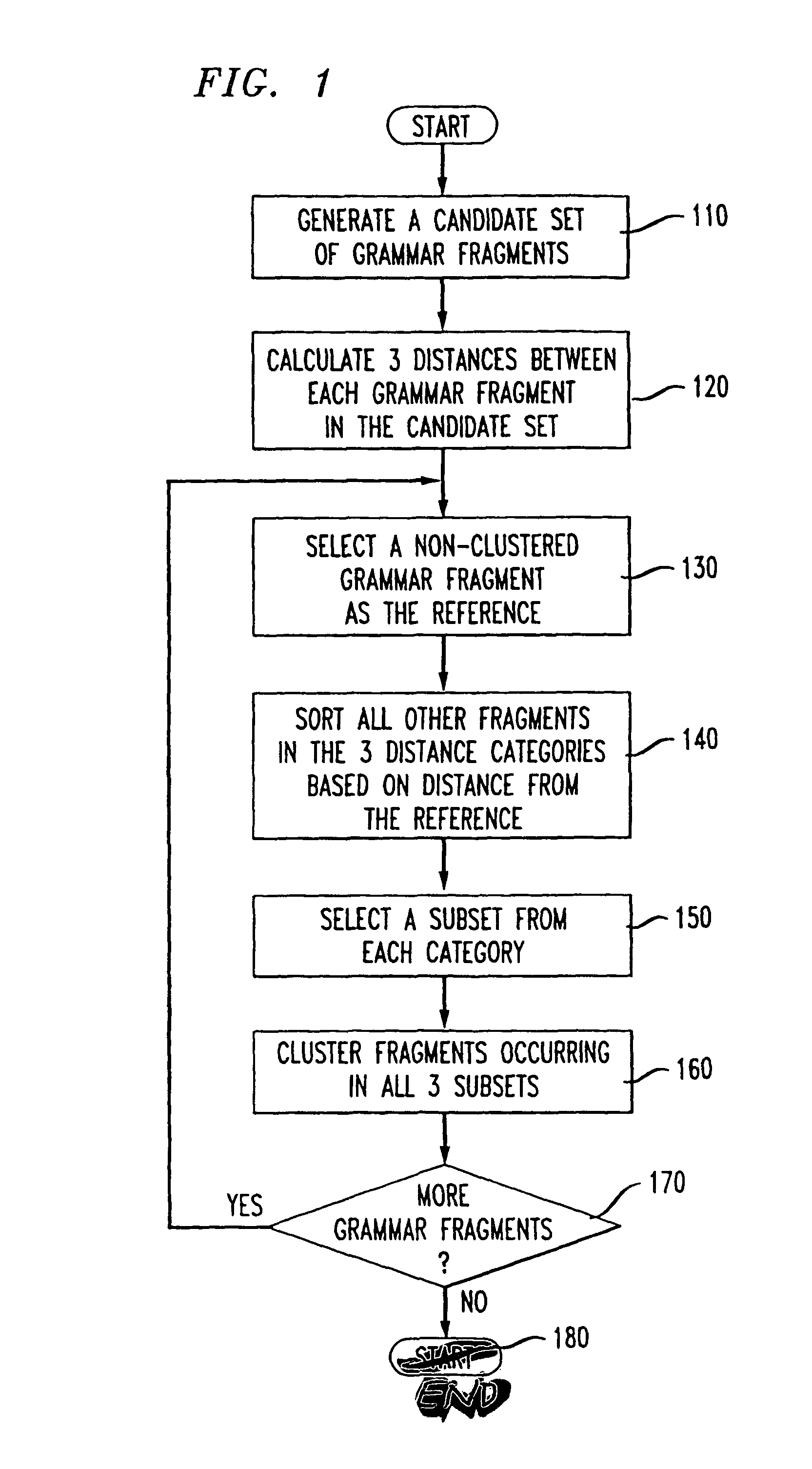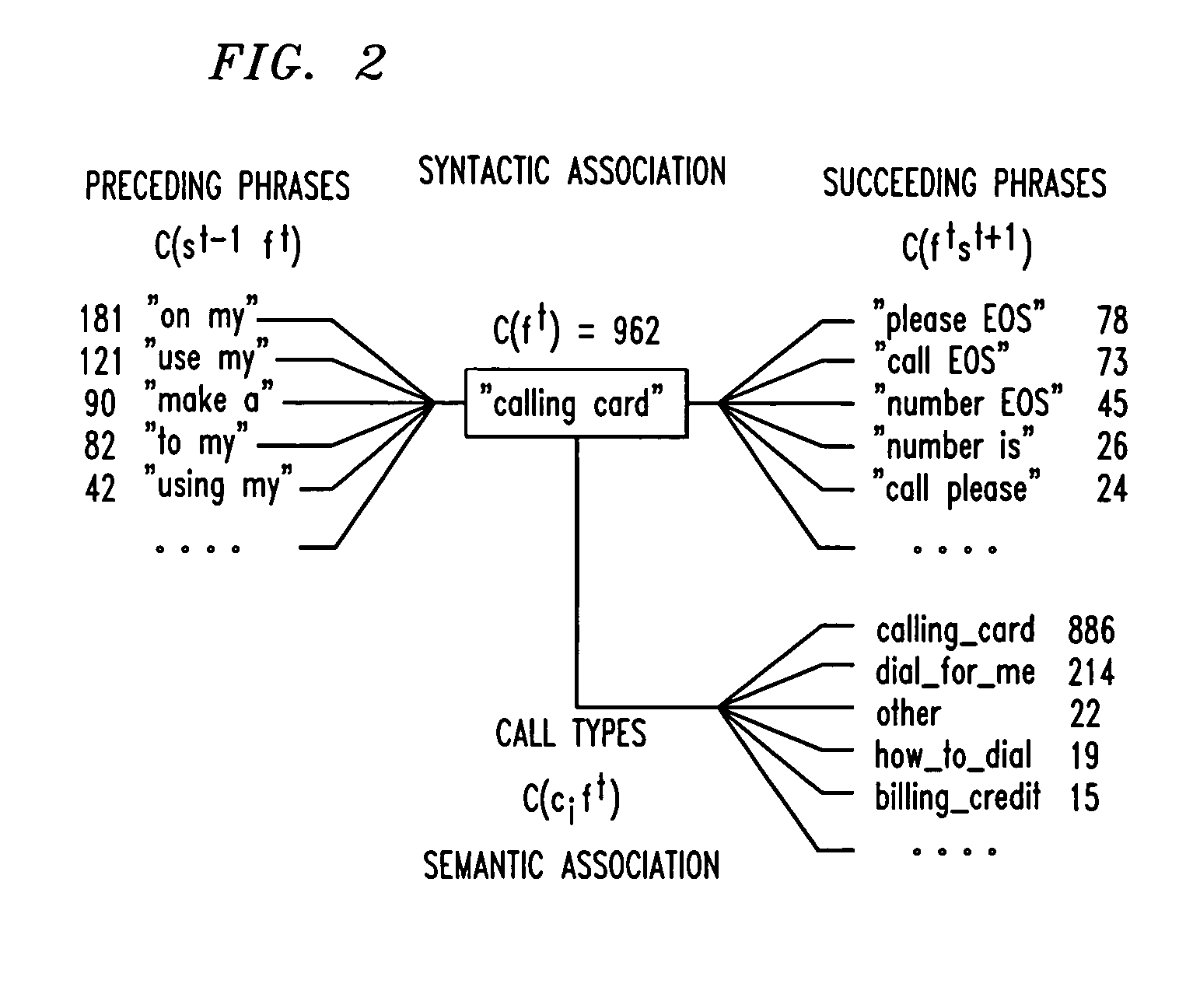Grammar fragment acquisition using syntactic and semantic clustering
a grammar fragment and semantic clustering technology, applied in the field of automatic acquisition of grammar fragments, can solve the problems of inability to analyze the majority of natural language utterances completely by these methods, and the semantic representation of spoken language understanding tasks can be very complex,
- Summary
- Abstract
- Description
- Claims
- Application Information
AI Technical Summary
Benefits of technology
Problems solved by technology
Method used
Image
Examples
Embodiment Construction
[0025]FIG. 1 is a flowchart illustrating the process of selecting the clustering grammar fragments. At step 110, phrases, words or symbols observed in the training set are selected as candidate phrases and placed in a candidate set of grammar fragments. The process then proceeds to step 120, where three distance measurements are calculated between each grammar fragment and the other grammar fragments in the candidate set. The distance measurements are based on three associated probability distributions, including succeeding contexts, preceding contexts, and other associated semantic actions or call-types. The process then proceeds to step 130.
[0026]At step 130, a non-clustered grammar fragment is selected as the reference grammar fragment. Then, at step 140, all other fragments are sorted in the three separate distance categories, based on their distances from the reference fragment. The process then proceeds to step 150, where a subset is identified from each of the three ranked li...
PUM
 Login to View More
Login to View More Abstract
Description
Claims
Application Information
 Login to View More
Login to View More - R&D
- Intellectual Property
- Life Sciences
- Materials
- Tech Scout
- Unparalleled Data Quality
- Higher Quality Content
- 60% Fewer Hallucinations
Browse by: Latest US Patents, China's latest patents, Technical Efficacy Thesaurus, Application Domain, Technology Topic, Popular Technical Reports.
© 2025 PatSnap. All rights reserved.Legal|Privacy policy|Modern Slavery Act Transparency Statement|Sitemap|About US| Contact US: help@patsnap.com



